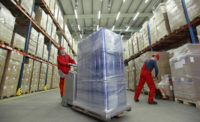The ins and outs of propane vs. electric vehicles
Let’s compare the range and fueling times of EVs and propane autogas-fueled delivery vehicles.

Electric vehicles (EVs) are perceived as “the future” of vehicle technology, from passenger cars to food delivery trucks, primarily due to the lack of tailpipe emissions. Since EVs are new technology, they are visually and psychologically appealing for fleet operators, who want to meet environmental mandates and reduce operational costs.
However, there is no “silver bullet” to solve the issue of harmful transportation emissions. The reality is that battery electric vehicles (BEVs) are still under development for the commercial truck segment due to the complexity of truck configurations coupled with range and payload requirements. On the flipside, propane autogas-fueled vehicles have been on the scene for over 100 years. And, advancements have been made to liquid propane systems during the past decade. New calibration and catalyst innovations are taking these propane vehicles to near-zero emissions levels, making a strong case for adoption.
Let’s compare the range and fueling times of EVs and propane autogas-fueled delivery vehicles.
With quick fill-up time and a long driving range, propane autogas vehicles stay on the road. Fueling propane autogas vehicles takes minutes, compared to hours to “fuel” (recharge) an EV. Charging EVs takes up to 5 hours, keeping vehicles off the road for extended periods of time. Propane autogas vehicles have a substantially longer range than EVs. Class 4-7 propane autogas vehicles can achieve a range of up to 350 miles on a single fueling. Electric work trucks have a range of about 120 miles on a single charge.
Yet, only EVs can cut tailpipe emissions and reduce a fleet’s carbon footprint. When viewed holistically, propane autogas vehicles compete with EVs in reducing emissions. Propane autogas engine technology has progressed to the point where emissions are reduced to near zero. They emit substantially less nitrogen oxides, fewer total hydrocarbon emissions and virtually eliminate particulate matter than diesel. While propane comes from natural gas processing, and to a smaller degree oil refining, renewable propane is a growing source. Renewable propane is a non-fossil fuel produced from 100% renewable raw materials, such as waste, residue and sustainably produced vegetable oils. There is increasing interest in renewable propane due to its ability to help meet growing demand for cleaner products. It can also be used as a “drop-in” replacement fuel because it’s chemically nearly identical to conventional propane.
Although EVs don’t produce direct vehicle emissions, they do produce lifecycle emissions related to energy and battery production, processing, distribution, disposal and usage. Electric performs cleaner than conventional fuels, like diesel and gasoline, but the manufacturing, transportation and recharging of batteries — combined with the losses in transmission and distribution of electricity — still have a significant impact on the environment. According to the U.S. Energy Information Administration, Washington, D.C., 63% of electricity generation comes from fossil fuels, including more than 27% from coal. Renewable sources make up just 17%.
Plus, initial cost of these two alternative-fueled vehicles differs greatly. A class 4-7 electric vehicle can cost 3-4 times more than a propane autogas vehicle.
When it comes to taking care of these vehicles, both EVs and propane autogas vehicles offer reduced maintenance when compared to conventionally fueled vehicles. Neither type of vehicle requires the complex after-treatment systems or timely regeneration that follows diesel vehicles. For long-term infrastructure, electric fleets have to install and pay for charging management software to adequately maintain charging schedules for multiple vehicles. Propane autogas offers multiple options for infrastructure set-ups that keep budgets in check.
For EVs, there is work to be done on several fronts, including:
- The integration of the technology and controls strategy needs to improve.
- Battery cost must continue to come down.
- Infrastructure needs must be addressed.
- Service locations must be identified.
- More OEM involvement needs to occur, so suppliers can start supporting larger volumes and drive additional innovation.
- Second life for the batteries once they are decommissioned from the vehicle.
Fleets must look at all commercially available options before jumping on the EV bandwagon. Solutions such as propane autogas are “shovel ready” and can offer significant emissions and cost reductions while waiting for future technologies such as battery electric and hydrogen fuel cells to mature.
Looking for a reprint of this article?
From high-res PDFs to custom plaques, order your copy today!





